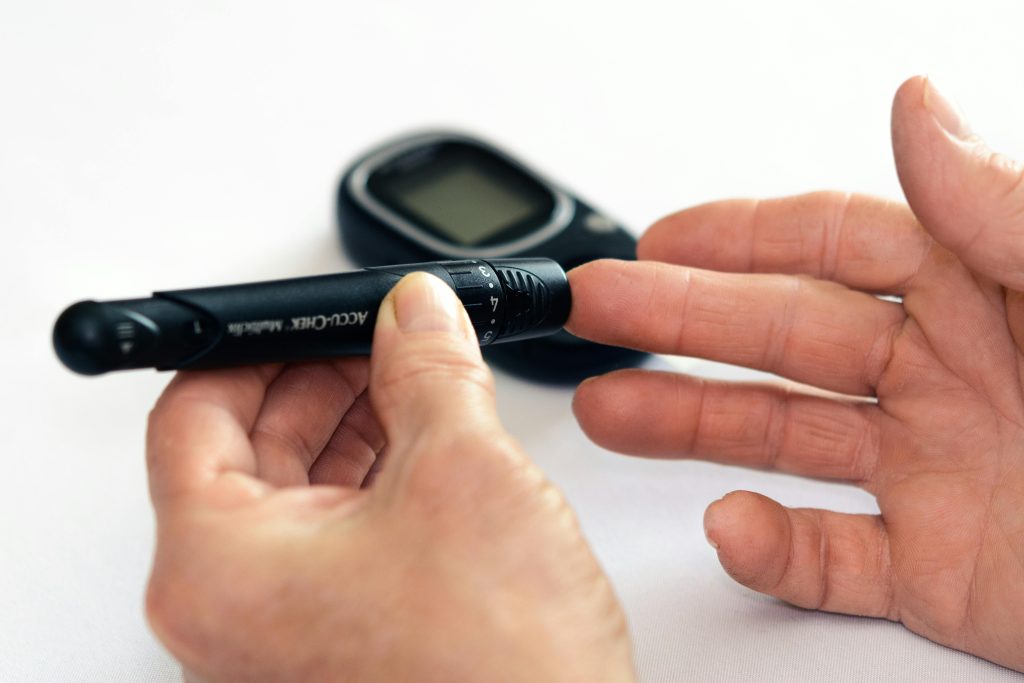Your body speaks in numbers. 96… 210… 68. Those digits flashing on your glucose monitor aren’t just readings—they’re messages about what’s working and what needs to change.
With 37 million Americans living with diabetes and medical costs averaging $16,750 per year per patient, learning to manage this condition at home isn’t just helpful—it’s essential for your health and wallet. The good news? Small, consistent changes can prevent 80% of type 2 diabetes complications when started early.
This guide breaks down diabetes management into three pillars anyone can implement:
- Blood sugar-friendly eating (without giving up flavor)
- Movement that makes a real difference (no gym required)
- Daily habits that add years to your life
Understanding Your Numbers: The Diabetes Basics
Normal vs. Problematic Blood Sugar Levels
- Fasting glucose (morning reading): 70-99 mg/dL (normal), 100-125 (prediabetes), 126+ (diabetes)
- A1C (3-month average): Below 5.7% (normal), 5.7-6.4% (prediabetes), 6.5%+ (diabetes)
Critical fact: Every 1% drop in A1C reduces eye/kidney/nerve damage risk by 40%.
Pillar 1: Diabetes Diet Made Simple
The Plate Method (No Counting Carbs Needed)
Visualize your plate divided:
- ½ Non-starchy veggies: Broccoli, spinach, peppers
- ¼ Lean protein: Chicken, fish, tofu
- ¼ Quality carbs: Quinoa, sweet potato, berries
Study result: Using this method improves blood sugar control 30% better than restrictive diets.
10 Blood Sugar-Smart Food Swaps
- White rice → Cauliflower rice (cuts carbs by 90%)
- Soda → Sparkling water + lemon
- Potato chips → Almonds or pumpkin seeds
- White bread → Sprouted grain bread
- Fruit juice → Whole fruit + nut butter
- Cereal → Greek yogurt + berries
- Mashed potatoes → Mashed cauliflower
- Pasta → Zucchini noodles
- Ice cream → Frozen banana blend
- Candy → Dark chocolate (85% cocoa or higher)
Timing Matters: When to Eat
- Eat every 4-5 hours to avoid spikes/drops
- Pair carbs with protein/fat (apple + peanut butter)
- Walk 10 minutes after meals – lowers post-meal spikes by 20%
Pillar 2: Exercise That Actually Lowers Blood Sugar
The 30-5-2 Rule
- 30 minutes daily walking (reduces insulin resistance)
- 5 minutes of stair climbing after meals
- 2 strength sessions weekly (muscle stores glucose better)
Proven impact: Consistent exercisers need 20% less medication on average.
No-Equipment Home Workouts
- Wall push-ups (3 sets of 10)
- Chair squats (3 sets of 12)
- Bicep curls (use water bottles as weights)
- Standing calf raises (while brushing teeth)
Key fact: Muscle is the body’s largest glucose storage site—1 lb of muscle absorbs 10x more sugar than 1 lb of fat.
Pillar 3: Daily Self-Care That Moves the Needle
Morning Routine for Stable Numbers
- Hydrate first: 16 oz water (reduces dawn phenomenon spikes)
- Check glucose: Before coffee/food
- Protein breakfast: Eggs or Greek yogurt prevents mid-morning crashes
Stress Management (Cortisol Raises Blood Sugar)
- 4-7-8 breathing: Inhale 4 sec, hold 7, exhale 8 (3 rounds)
- Evening gratitude journal: Lowers stress hormones by 23%
Sleep Hygiene (Poor Sleep = Higher A1C)
- Cool, dark room (65°F ideal)
- No screens 90 minutes before bed
- Consistent wake time (even weekends)
Research shows: Just one night of poor sleep causes temporary insulin resistance.
Tracking Progress Beyond Glucose Numbers
5 Underrated Health Markers
- Waist circumference: Under 35″ (women), 40″ (men)
- Resting heart rate: Below 80 bpm
- Blood pressure: Under 120/80
- Daily step count: 7,000+ shows activity level
- Energy consistency: No major crashes between meals
When to Call Your Doctor
Seek immediate help for:
- Glucose over 300 mg/dL for 2+ readings
- Ketones in urine (with high glucose)
- Numbness/tingling in hands/feet
Schedule an appointment if:
- Morning readings creep up over time
- You lose weight without trying
- Vision changes occur
Diabetes isn’t a life sentence—it’s a wake-up call written in your body’s most honest language. Those numbers aren’t judgments; they’re guides.
Every vegetable chosen over chips, every walk taken instead of scrolling, every mindful breath when stress hits—these are the quiet acts of rebellion against what diabetes tries to take from you.
The path isn’t about perfection. It’s about persistence. Your body isn’t keeping score—it’s responding. And with each small choice, you’re teaching it to respond better.
So tonight, as you prick your finger one more time, remember: That drop of blood isn’t just a measurement. It’s a message. And you’re learning to answer it—one day, one meal, one step at a time.
Because the life waiting for you on the other side of good management isn’t just longer—it’s fuller, sweeter (in all the right ways), and entirely yours to claim.

